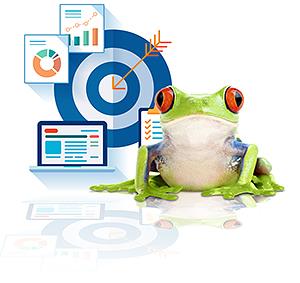Optimized IT is technology that doesn’t annoy you, slow you down, get in your way or put you at risk. Instead, it kick starts you into action and makes your life easier.
You, too, can have optimized IT. Just take these steps — each one improves your IT environment and can save the day when your day needs saving. And while you can’t get your IT absolutely perfect (no one can), you will be able to make it better. Here’s how:
1. Pay attention.
To know where you’re going with your IT, you have to know where you are right now. What do you want your tech to accomplish for you? Think about your big-picture objectives, like wanting to:
- Keep hackers out
- Complete tasks faster
- Automate things
- Access files from any device
- Limit other people’s access certain files
- Have everything backed up and easy to restore
- Help to do things I couldn’t do otherwise
Then take a look at all of your IT — computers, apps in the cloud, traditional apps, Internet service, backup processes and the ability for all of those things to communicate with each other. This will help you get your head around your IT ecosystem and how it can serve you best.
2. Use tools that work.
Determine which of your tech tools are most important — your computers? The apps you use to manage your financial data or your contacts, email and schedule? The tablet you take with you everywhere? Your backups? Prioritize your tools based on your needs, then update, repair and/or tweak in order of priority. You’ll get closer to an optimized IT environment with each step! And you’ll be much more satisfied with your IT operation overall. If you need to budget for larger expenses in 2016 or in the next few years, do it. Otherwise you may end up spending your IT money on something else.
Once you’ve got an area of your technology working smoothly, don’t forget to keep your eye on it. Sometimes things change, break, mess up and go wacky for apparently no reason sometimes. Best to catch things early before they become problems. For businesses, IT experts can give you advice on when it’s time to make important changes, like upgrading your operating system or switching to Virtual Desktop Infrastructure (VDI).
3. Be more secure than the next guy.
When your IT ecosystem is more secure than your neighbors’ ecosystems, guess which one the bad guys will be more attracted to? Take care of your ecosystem by locking your virtual entrances, setting your virtual alarms and not opening your virtual doors to strangers. Your goal is to keep your stuff where it’s supposed to be and not have to deal with cleaning up after a break in. All the time — not just as in Step 3. If you’re in business, think of your house as your fort, follow proven standards and make sure your employees know what to do to help protect it. Being more secure can even help you win new business.
4. Get rid of bottlenecks.
If it’s slowing you down, it’s holding you back. Now that you know what you need, your tools are working properly and you’re doing a great job protecting your data, it’s time to get your IT operation hopping along at warp speed. Optimized IT is like getting all of the green lights as you’re traveling across town — who wouldn’t want that? Whether it’s updating your core apps, getting a handle on your email apps or email process, updating or switching to a better or faster Internet provider, getting more GB on your data plan or automating the tasks you do all the time, what seems like small changes can make an enormous impact on productivity. With the added bonus of fewer frustrations.
5. Back up and verify your backups.
You need to be doing this all along so if you haven’t been backing up properly, this is actually Step #1. And it’s tucked in between each of the other items, too. Just like being secure, having a safety net for when things go wrong is an ongoing part of optimized IT. Your complete, verified and available back up can literally save the day — and more. You need two backups minimum — one in the cloud and one not — and backup as often as the amount of time you’re willing to spend replacing what you lost. If you’re running a business, don’t use an external hard drive as your only backup (yikes). Instead, have a solid Disaster Recovery Plan (which is part of your larger Business Continuity and Cybersecurity plans). Businesses and home users alike should verify that their backups really work before they have to suddenly rely on them.
Leapfrog is all about IT optimization — frogs want people to have great IT so they can do the things that matter to them better, more efficiently and more securely. Take these steps and see how much further you can leap in 2016.
| You may also be interested in: |
|
|

